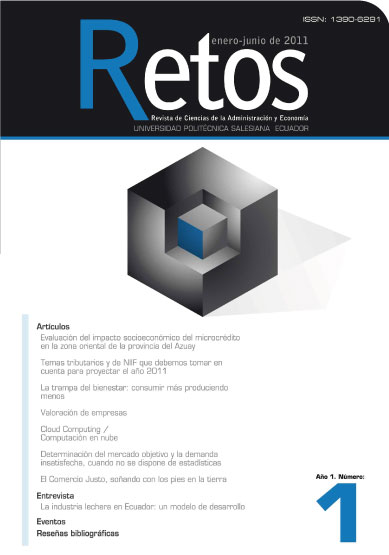El Comercio Justo, soñando con los pies en la tierra
Main Article Content
Abstract
Article Details
Authorship: The list of authors signing must include only those people who have contributed intellectually to the development of the work. Collaboration in the collection of data is not, by itself, a sufficient criterion of authorship. "Retos" declines any responsibility for possible conflicts arising from the authorship of the works that are published.
Copyright: The Salesian Polytechnic University preserves the copyrights of the published articles, and favors and allows their reuse under the Creative Commons Attribution-NonCommercial-ShareAlike 3.0 Ecuador license. They may be copied, used, disseminated, transmitted and publicly displayed, provided that: i) the authorship and the original source of their publication (journal, editorial and work URL) are cited; (Ii) are not used for commercial purposes; Iii) mention the existence and specifications of this license.
References
European Fair Trade Association EFAT, Anuario 2001, EFAT 2003, tomado de López, Mauricio, Estado del arte del comercio justo en Ecuador, Tesina Flacso Ecuador, Diplomado Superior en Gestión del Desarrollo Local, Quito, 22 de noviembre, 2005.
MAC MASTER, Bruce, ¿Es el comercio justo una forma de responsabilidad social?, Revista DINERO, Bogotá, 8 de marzo, 2007.
MARTÍNEZ, Luciano, ¿Puede la pobreza rural ser abordada a partir de lo local?, en ICONOS, Revista de Ciencias Sociales, Año X, No. 29. El mundo rural en los Andes, Flacso, Quito, septiembre,2007.
NIELL, Cristina, En los años 2000-2001 costaba más recoger el café que lo que se obtenía de su venta, Intermón Oxfam, Barcelona, febrero,
2008.
Oxfam internacional, Cambiar las reglas: comercio, globalización y lucha contra la pobreza, Barcelona, 2002.
OXFAM, El café de comercio justo.VÁSQUEZ, Lola, Ecuador y su realidad,
edición 2008 2009, Quito, 2008

